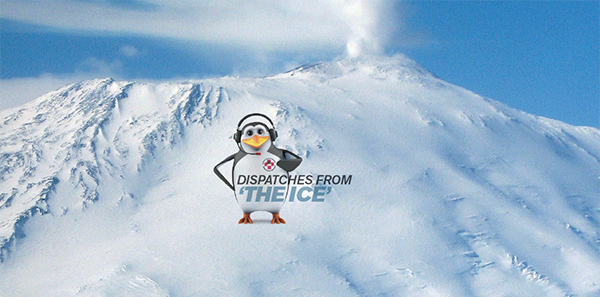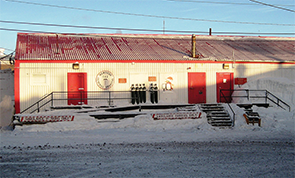
“How do you get to Antarctica?” may be the third most common question I get when I tell people I’ll be spending the winter there. (The first, of course, is, “How cold is it?” The answer? “Colder than a … !” You get the idea.)
Explore This Issue
ACEP Now: Vol 35 – No 03 – March 2016After several days’ delay in Christchurch, New Zealand, due to very bad weather on The Ice, I arrived at Antarctica’s McMurdo Station. The 2,180-mile trip took about five hours in a US Air Force C-17 plane. If we had taken the alternative, a C-130, the trip would have been an excruciating eight hours. Neither plane has the amenities you expect when flying. They do provide a bag lunch, but heating is minimal, there are few windows, most seats are webbing, and the “bathroom” is a bucket surrounded by drapes.
Antarctica, the continent I’ll be living on for the next seven months, has a surface area of 5.4 million square miles, 1.4 times the size of the United States. This makes it the fifth largest continent. Almost 98 percent of the continent is covered by an ice sheet that averages 6,000 feet (more than one mile) thick. Antarctica has 70 percent of the world’s fresh water, frozen as ice. Yet, to our knowledge, explorers only reported seeing it in 1820 and landed on the continent in 1821. Explorers first “overwintered” there in 1898, a tradition I will be continuing.
McMurdo Station sits at the southern tip of the volcanic Ross Island, at the edge of the Ross Ice Shelf and the Ross Sea. The 13,300-foot Mt. Erebus, an active volcano, towers above the station. Our plane lands on a constantly maintained airfield on the Ross Ice Shelf. It’s disconcerting to realize that this enormous cargo aircraft is setting down on ice covering the very deep Southern Ocean. I’m comforted in knowing that experts maintain this airfield—a huge undertaking given the extreme cold and frequent gale-force winds—throughout even the mildest (everything is relative) times of the year.
Antarctic Welcome

The hospital clinic at McMurdo Station.
When do you really know you’ve arrived? As the plane descends toward the airfield, everyone receives the instruction to “bundle up,” meaning that they should don all of their extreme cold weather (ECW) gear. This sounds extreme until they open the passenger door and we’re suddenly hit by the brutal cold.
Pages: 1 2 3 | Single Page


No Responses to “Cold Temperatures Greet Emergency Physician Spending Winter in Antarctica”